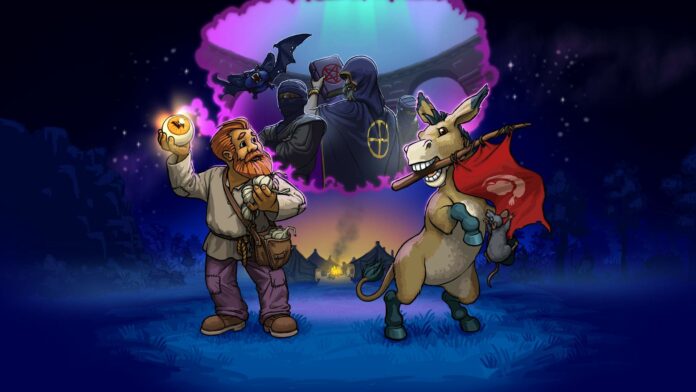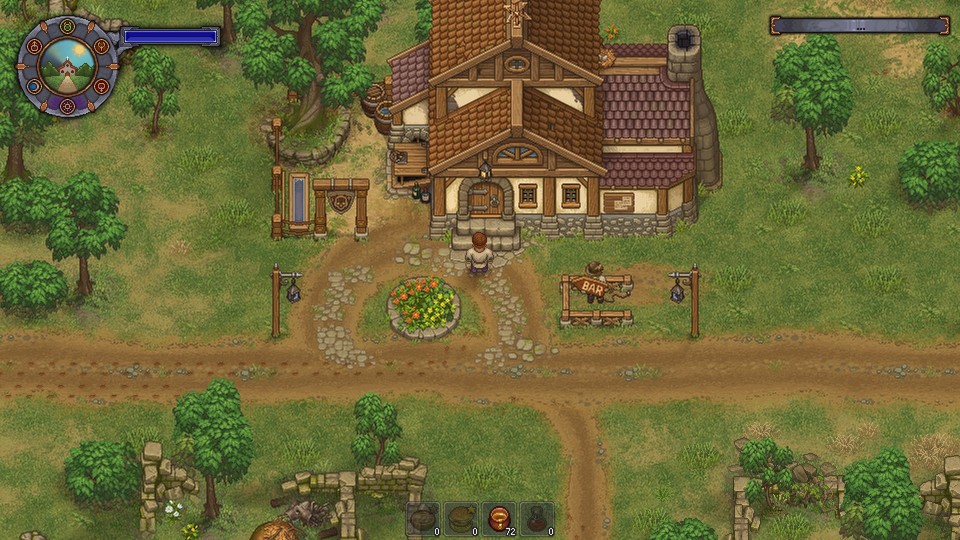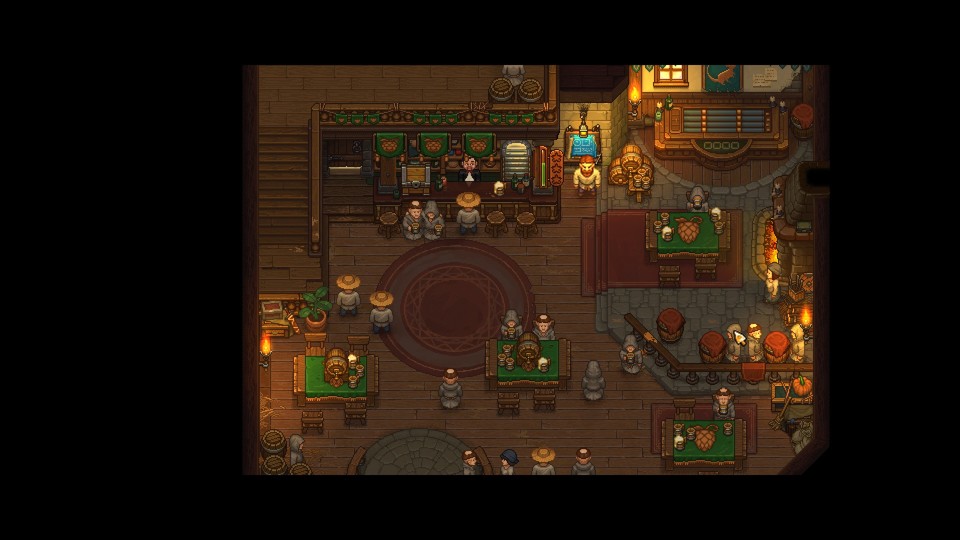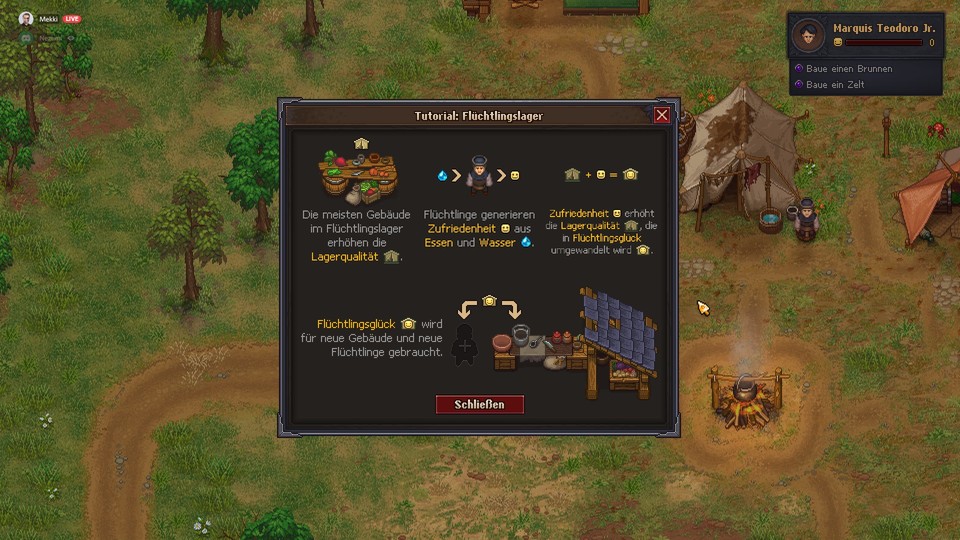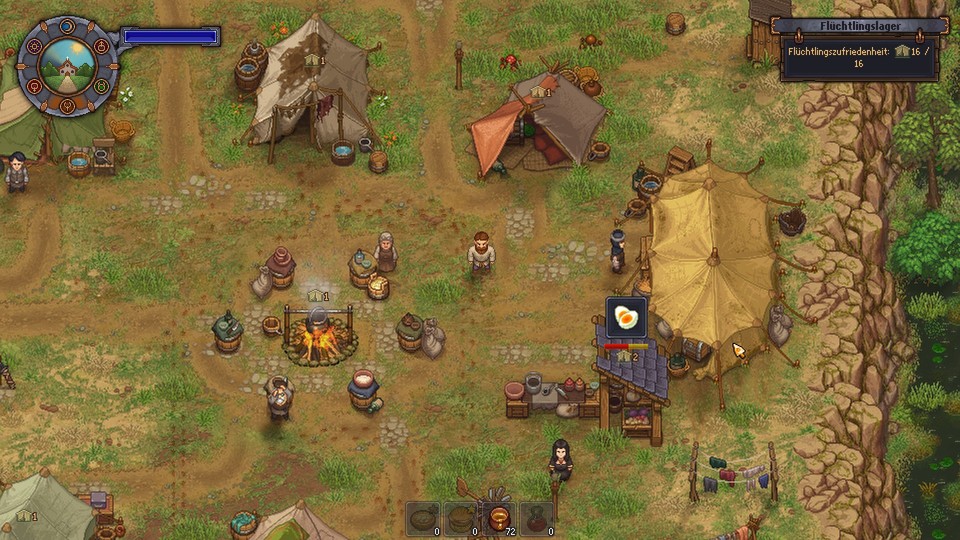The expansions of Graveyard Keeper offer great fun for dozens of hours of play. But instead of solving an important point of criticism, it is only relocated.
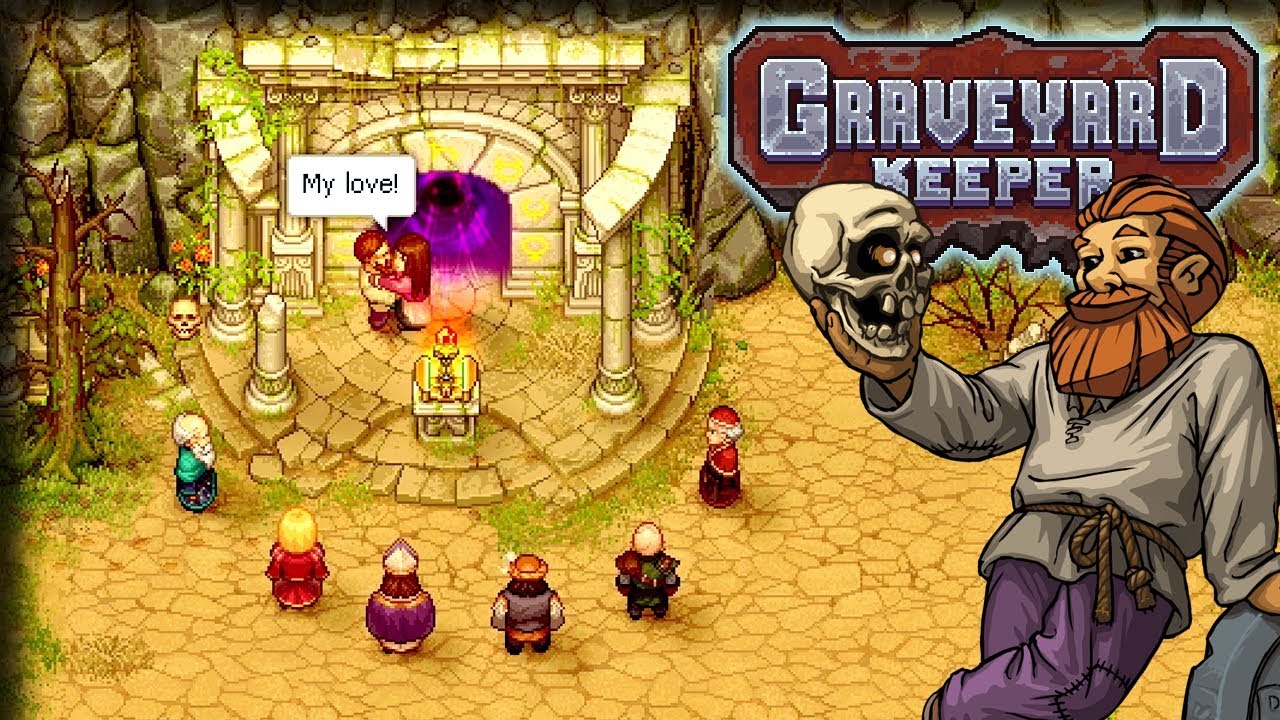
If you think being a graveyard keeper means putting someone in the ground every now and then and otherwise putting your feet up, you’re wrong – at least if we take our job profile in Graveyard Keeper as a reference. In the game, which was originally released in 2018 and which we can confidently call “Harvest Moon with corpses”, we build our graveyard paradise complete with church and farm.
We also work as gardeners, winegrowers or alchemists and explore a dungeon that stretches over 15 levels below the church (who would think “Diablo”). Add to this the difficulties that the excellently written side characters, such as a communist donkey and a talking skull, keep getting us into as part of the plot.
We already praised all this in the original review of Graveyard Keeper. However, there were also points of criticism, namely the grind that got too out of hand in many places and the long running paths. But a lot has happened since then, so we want to subject the three expansions released so far, Breaking Dead, Stranger Sins and Game of Crone, to a post-test for heart, kidneys and other recyclable organs at this point.
Table of Contents
Bodies in the basement
The three DLCs fit seamlessly into the main game. For those who missed it, here’s a quick summary: Our eponymous Graveyard Keeper is actually an ordinary man who gets hit by a car on his way home. When he comes to, he wakes up in a medieval world.
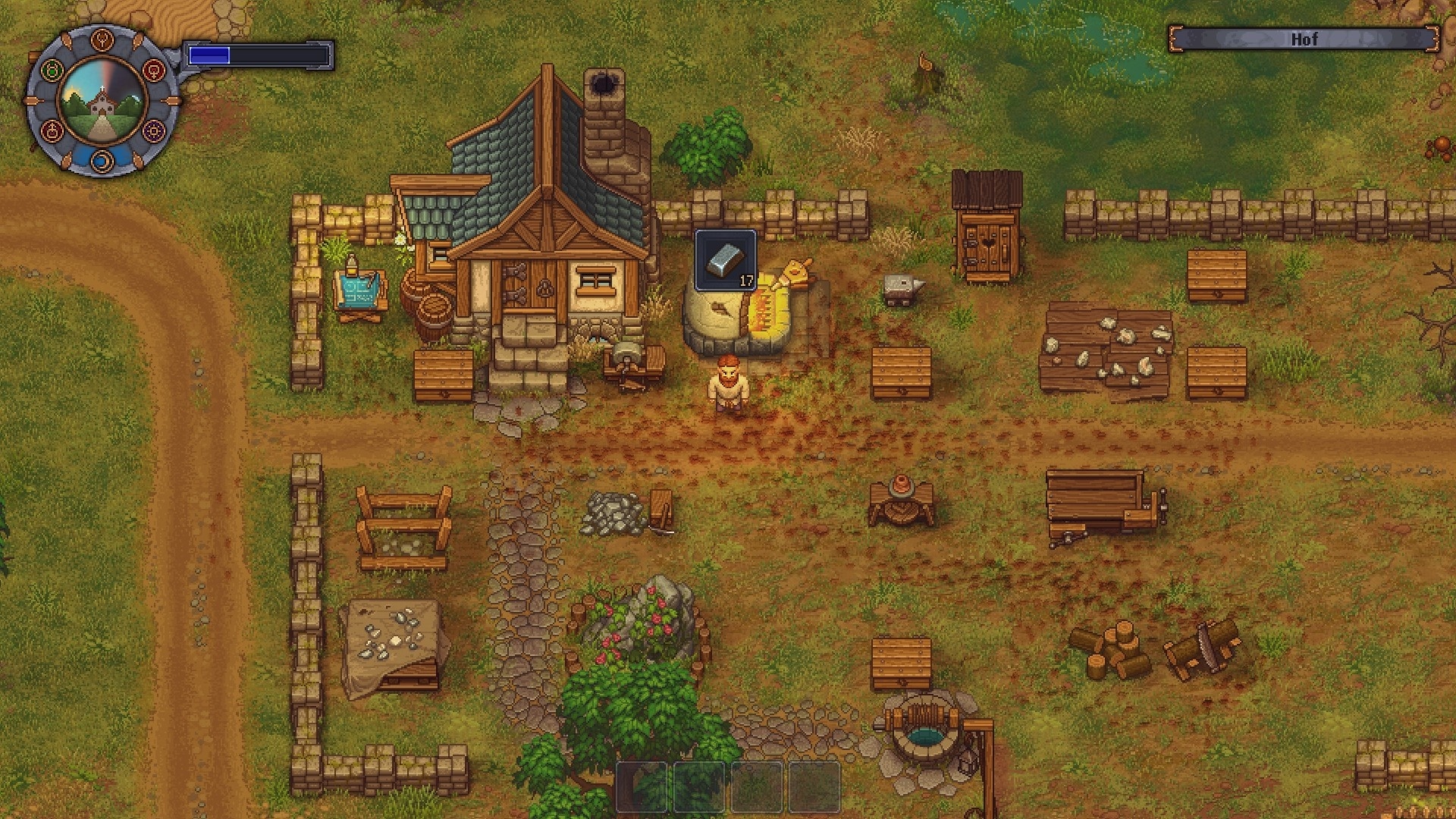
There he is to take on the role of graveyard keeper, give sermons and look after the house and yard. By completing quests, we uncover a quite complex background story. The goal of our protagonist is to activate a portal and get home.
But it can take a good 70 hours or more to get there. At first, our most important task is to spruce up the cemetery and later also the church. We take care of that with beautiful gravestones and grave borders. If necessary, new corpses are brought by a donkey, which we can directly call “comrade” because of its attitude.
In order to do our job, we need raw materials. So we chop wood, mine stone and metals, use them to make better tools, gravestones, higher-quality crafting materials and ingredients for recipes.
Everything is better with zombies!
This is where the free DLC Breaking Dead comes in, because it gives us the opportunity to bring corpses back to life so that they can form the backbone of our economy as will-less zombie workers (or so the donkey would surely put it).
In practice, it goes like this: as soon as we have opened the gate in our cellar in a quest, a loud groan prompts us to explore. Hanging on the wall in the dungeon next door is Gunter, an undead with consciousness, awakened by experiments and a special potion. Conveniently, he tells us how to turn our lifeless clientele into mindless helpers.
We try this out at the new revival table in the morgue and then finally mutate into Dr. Frankenstein by breathing new life into the putrid bodies – including the obligatory electric shock.
And from then on we have completely new possibilities! At inexhaustible resource deposits, we build the previously explored mining sites for zombies via the now even more extensive tech tree and place up to two undead helpers there. Since zombies are not only good at hacking but also at staggering, another colleague shuffles back and forth day in, day out, filling pallets between the workplace and the warehouse in the yard.
Zombie in the basement
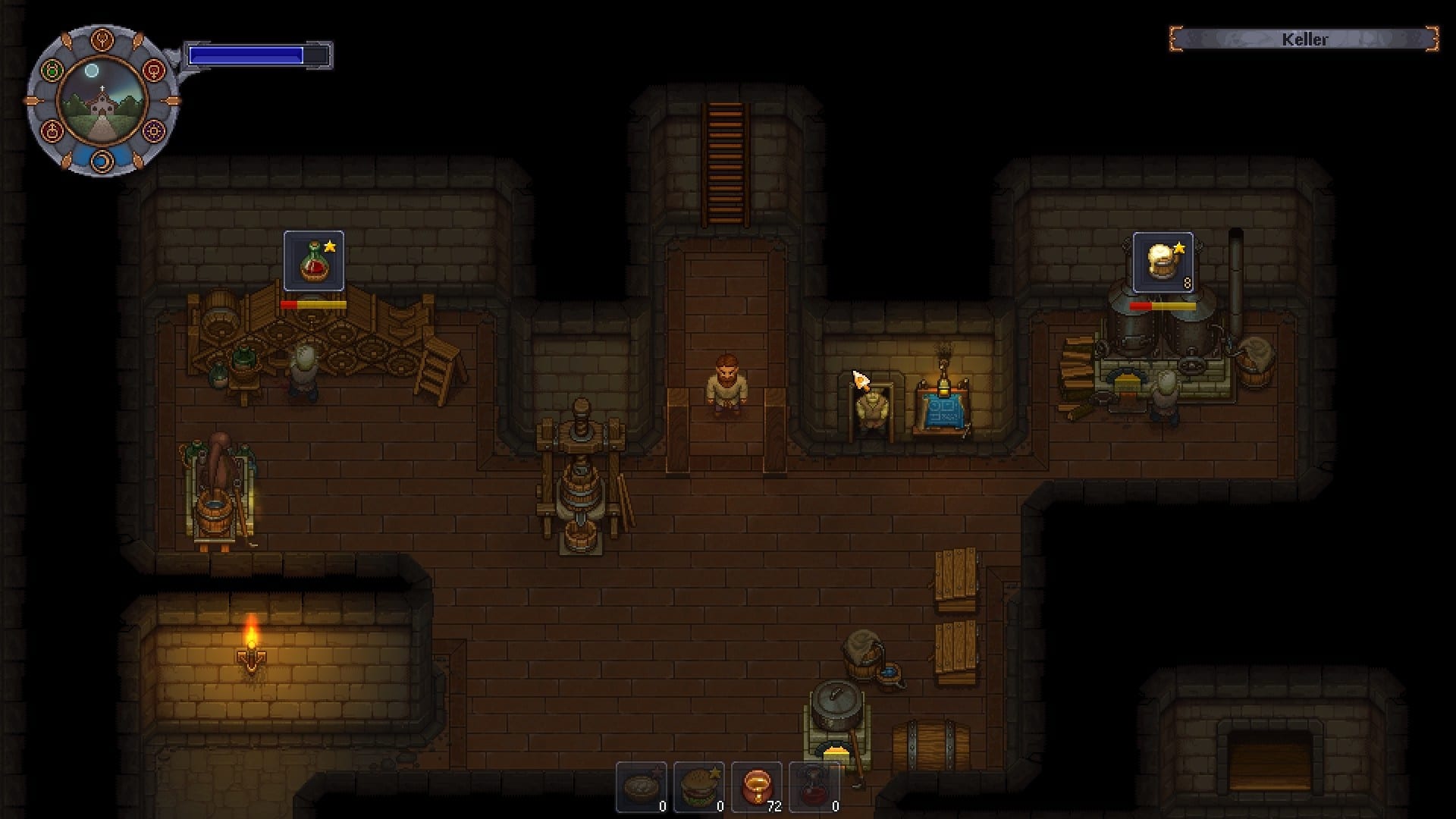
Zombie in transport
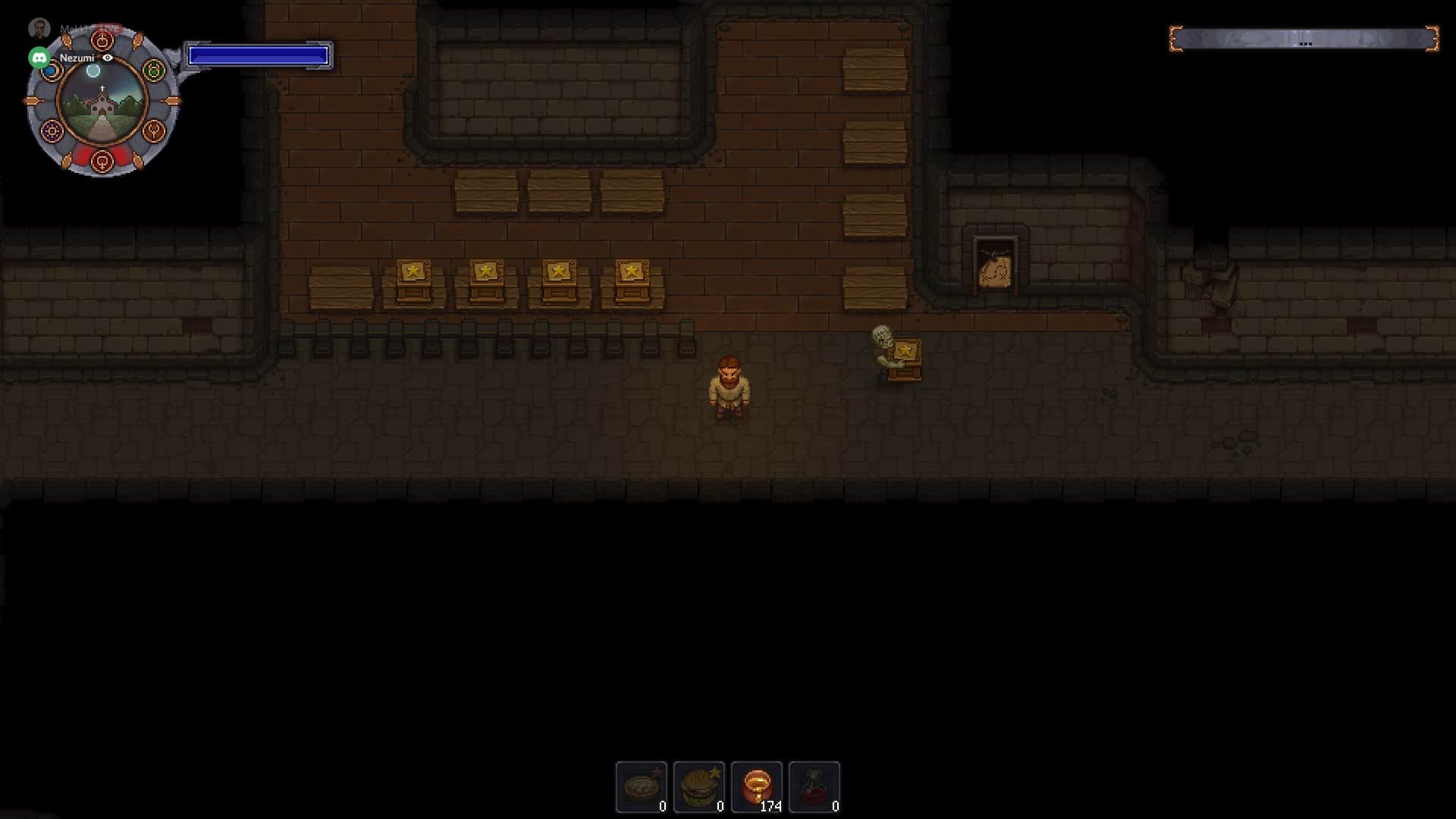
Zombie Lumberjack
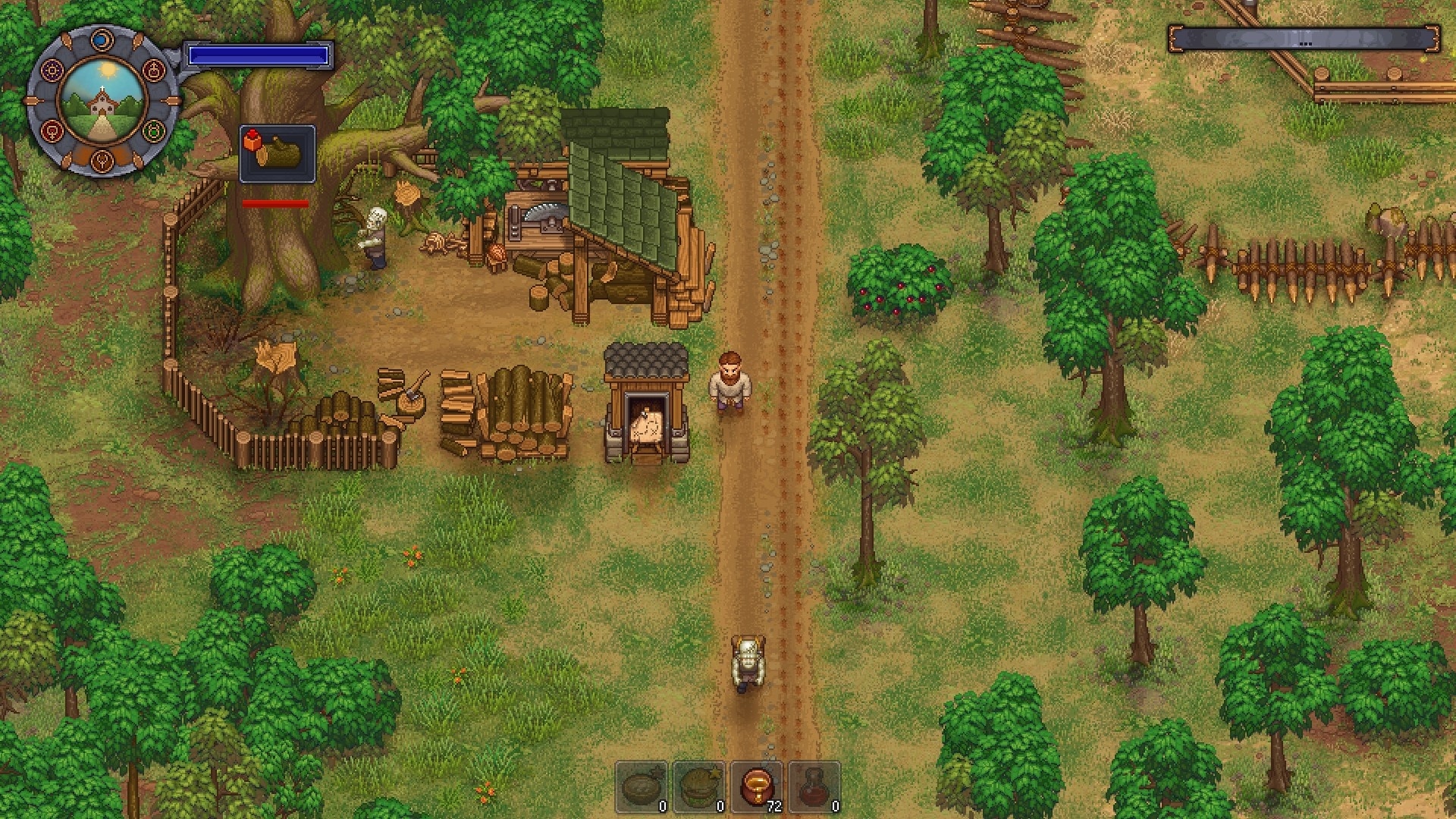
But it wouldn’t be Graveyard Keeper if even these automatisms didn’t hide a tricky complexity: to have maximally efficient servants, our corpses must have the highest possible number of white skulls.
At the dissection and embalming table we have many possibilities to enhance the delivered material. As with everything in the game, what counts here is that it is quite fun and you can lose yourself in the constant optimisation. But the truth is that it also requires a lot of grind to produce perfect corpses – and it’s not really necessary.
Apropos Grind: This was a main point of criticism in the test. Has it improved with the zombie update? The clear answer is no. On the positive side, we are always supplied with basic resources and the harvest is brought directly to the tavern or the merchant. On the negative side, the production chains are simply far too complex. One level less would have done the trick. This does not solve the problem with the grind, but only postpones it.
Comes a skull in a bar
The automation by zombies also creates capacities – for example for the two story DLCs. These integrate into the main game similarly well as the zombie mechanics. Stranger Sins starts when we have brought Gerry, our never at a loss for a mischievous comment, a wine (which he can’t taste) and he then wants to dig up a barrel of cognac with us (which he also can’t taste).
Instead of a noble drop, we stumble upon a powerful artefact that shows us extracts from the past of the village community in nicely animated in-game sequences and thus tells the complete and very complex background story of Graveyard Keeper. In order to be able to investigate the device further, Gerry also has a – literally – crazy idea: before we know it, we have bought the land and built the tavern “To the Talking Skull” on it. To keep the place running, we upgrade the interior, expand the pub, hold different events and supply the guests with alcohol.
“Listen to the talking skull,” they said. Because our disembodied friend Gerry insisted on digging up a cognac barrel at the beginning of Stranger Sins and we foolishly found an important artefact in the process, we now have to run a tavern as a cover. This can – of course – be expanded and attracts villagers with alcohol and festivities. Provided we keep supplying them with resources.
At the same time, we are searching for a total of 17 ancient artefacts with which we can unlock the sequences. These are distributed around the village or in the possession of the inhabitants, which results in a sequence of increasingly annoying fetch, build and bring quests, especially towards the end.
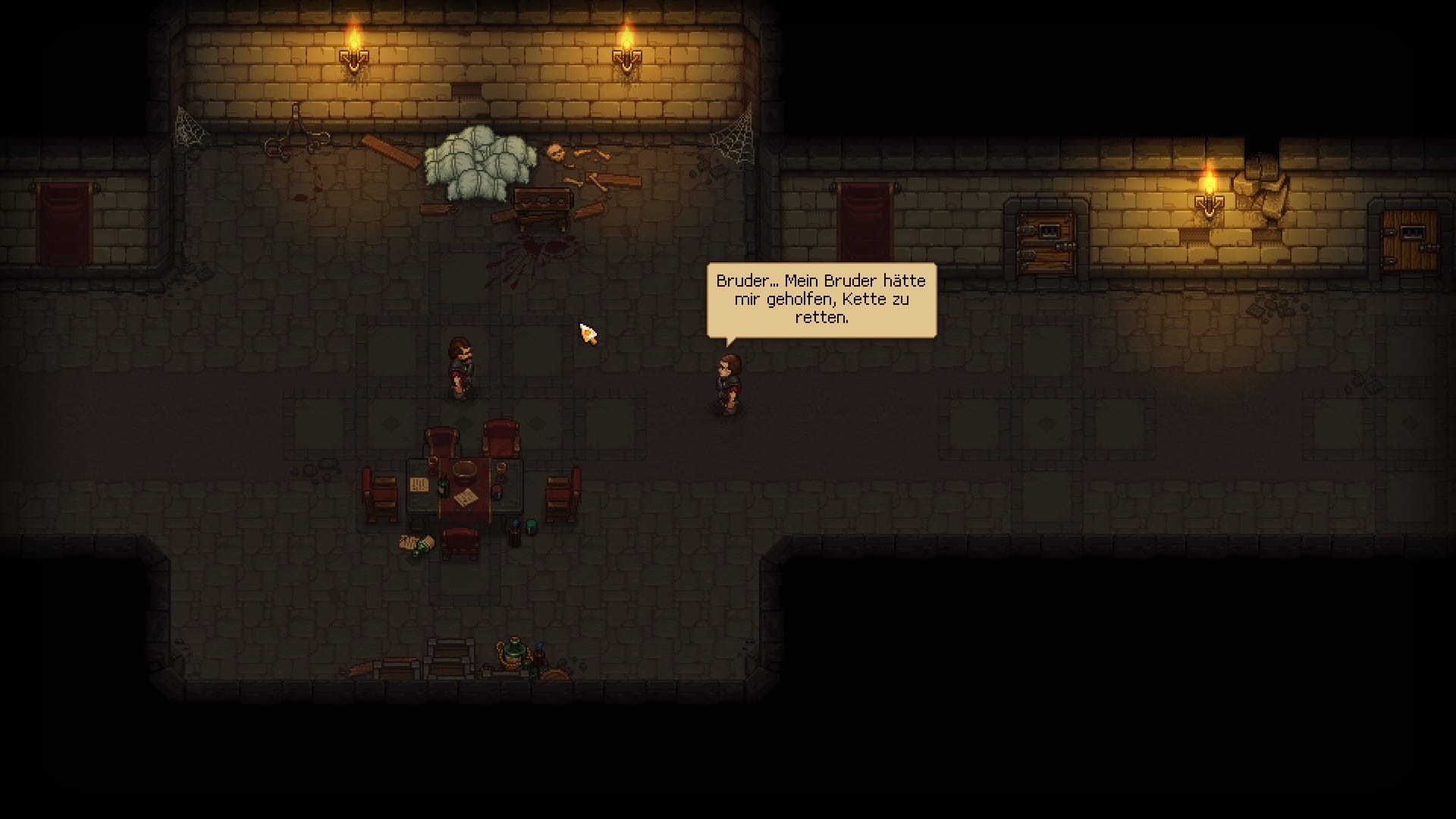
It is definitely positive that the history of the village is illuminated and the inhabitants are given more depth. However, when we have to run through several places for almost every item and in between have to produce thoroughly complex items that are not needed after all, we feel like a zombie ourselves, just dully running from A to B for about eight hours. Speaking of walking: Commuting between locations is more pleasant than in the main game thanks to teleport options, but we still commute back and forth far too often in Graveyard Keeper.
Finally a camp of our own
Though we thought we had seen it all in our job as a graveyard keeper, we are astonished when, at the beginning of the third DLC Game of Crone, the mysterious Teodoro stands next to our bed one morning and tells us about his group of noble fugitives who have hidden in the forest not far from the church for fear of the Inquisition.
Being helpful as we are, we supply the campers with food against their will, which increases the refugees’ satisfaction. We need this to unlock new buildings like the herb garden, tannery and more tents. In side quests we get to know the usual weird inhabitants better and after a short time feel very much at home among the obscure creatures.
Game of Crone plays mostly pleasantly equalised, but still offers the most content of the three addons. Instead of just managing the refugee camp, we also have to uncover the motives of a new mysterious inquisitor, and there is also a vampire roaming the village. As if all this were not enough, our donkey has decided to bring about socialist revolution – and we are to help.
The plot culminates in three possible endings, which really do have different consequences. Since, unfortunately, it is only possible to save to one memory and the grind factor is very high throughout the game, only very few players will probably run through the approximately ten hours several times.

